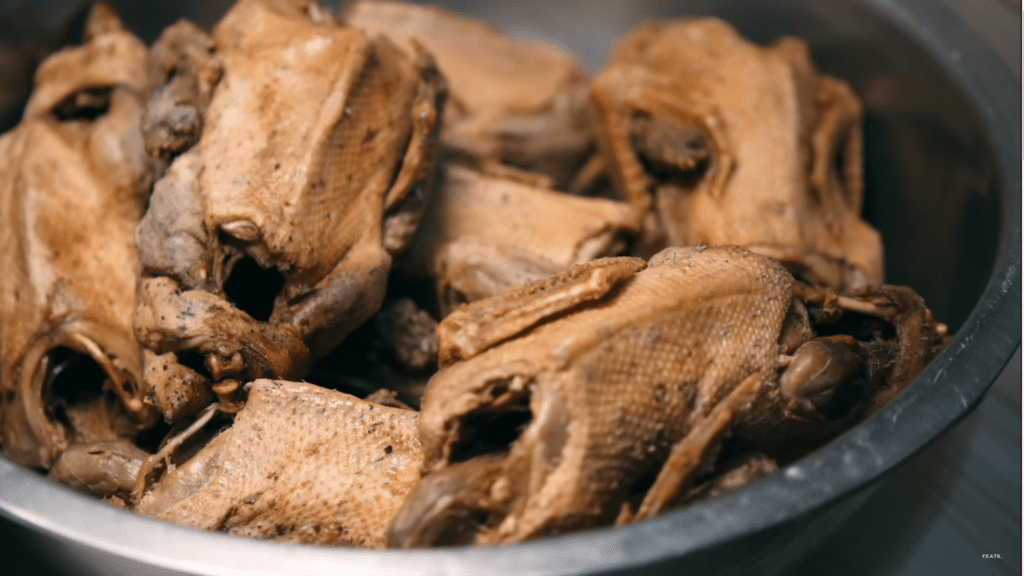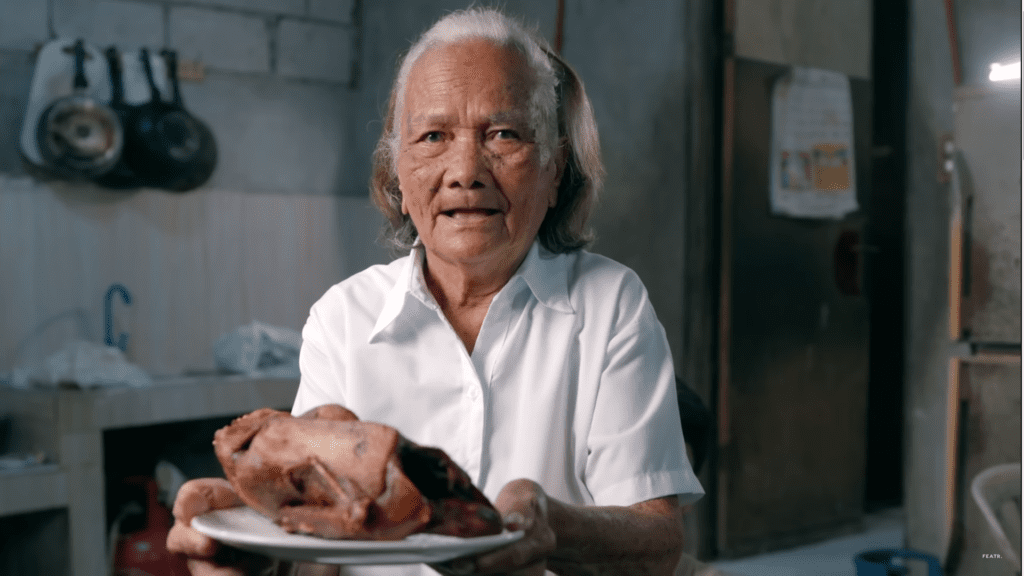When Filipinos think of a dish whose primary ingredient is duck, thoughts usually turn to Peking Duck or western dishes that involve duck, yes there are some dishes that use it as an alternative protein and every province will have it’s own specialty, but none that has garnered national attention.

In the Philippines, the most commonly consumed poultry is chicken yet a resourceful woman from Angono, Rizal went on to create her own unique and distinguished brand of fried duck or itik, as it is known locally.
Apolonia Liwanag Morales, also known as Aling Plonia started as a fish vendor but found that there was an abundance of ducks at the spot where she would source her fish. In 1972 a typhoon left the fish supply in shambles, so she needed an alternative.


She turned to selling raw ducks as there were plenty to be found in the area. Aling Plonia still remembers the earlier days of her time selling duck saying “Tinda ako ng tinda ng itik na hilaw. Pag natira yung maliliit, mahirap nang ipagbili. Dahil kitang-kita na maliliit yung natitira.”

The smallest ducks were hard to sell and Aling Plonia did not want them to go to waste and so she had the idea of preparing a marinade for the ducks before frying them. Using vinegar, garlic, pepper, and bay leaves, she infused them with a rich flavor before frying them in oil. The aroma (and eventually the taste) would attract nearby neighbors to Aling Plonia’s kitchen.


“Nang iniluluto ko, lahat ng magdaan, napapatigil at sinasabi sakin ‘Plonia, ano yang niluluto mo?’ Sabi ko Itik, fried, piniprito.” From then on, Aling Plonia’s recipe would almost always sell out. From twenty people to fifty, to eventually the whole town and beyond, Aling Plonia’s fried itik would have the streets lined with customers.

Eventually, customers would also ask for dipping sauce to go with the fried itik and so she made a sauce made of sugar, salt, chili, onions, soy sauce, vinegar, and water.
She remembers one customer encounter fondly “May kumalabit sa aking matanda. Nang linungin ko, naka-salakot. Ansabi niya saking ‘nene kung ano pinanunungkatan mong hanapbuhay, siya mong ikabubuhay at ipapalaki sa iyong mga anak. Diyan ka magkakaroon ng magandang habang buhay.’ Nang linungin ko aking kausap, wala na. Iyan, totoong nangyari sakin yan. Iyan. Siguro senyales yan galing sa Panginoon para sakin.”


Aling Plonia’s daughter and the rest of her family now care for their business that she started over five decades ago. It seems that the encounter she had, did come true as Aling Plonia can expect her legacy to live on for decades more as one of Angono’s cultural landmarks.
Written by: Miguel Lindog






